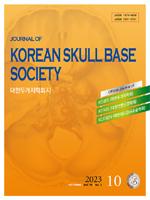This study aimed to conduct a systematic review of facial nerve schwannoma cases in Korea, spanning from 1996 to 2023. A systematic literature search identified 22 relevant articles covering 73 facial nerve schwannoma patients. Postoperative evaluations assessed improvements, stability, or worsening of facial paralysis symptoms, with the follow-up period ranging from 3 days to 73 months. The most common symptoms were facial palsy, affecting 50.7% of patients, followed by hearing loss and parotid mass. Site distribution indicated the mastoid segment as the most common, followed by the tympanic segment, the parotid segment, the geniculate ganglion, the internal auditory canal, the labyrinthine segment, the greater superficial petrosal nerve, the canalicular segment, the chorda tympani nerve, the cerebellopontine angle, the cisternal segment, and the middle cranial fossa. Postoperative evaluation demonstrated improvement in 24%, no change in 47%, and worsening in 29% of cases. While surgical removal remains essential for complete recovery, our findings suggest a need for careful consideration, as only a minority of patients benefited from the procedure. This study provides a comprehensive overview of facial nerve schwannoma in the Korean population, contributing valuable insights for clinical practice.
INTRODUCTION
METHODS
RESULTS
DISCUSSION
CONFLICT OF INTEREST
ACKNOWLEDGEMENTS
ORCID
REFERENCES
(0)
(0)
